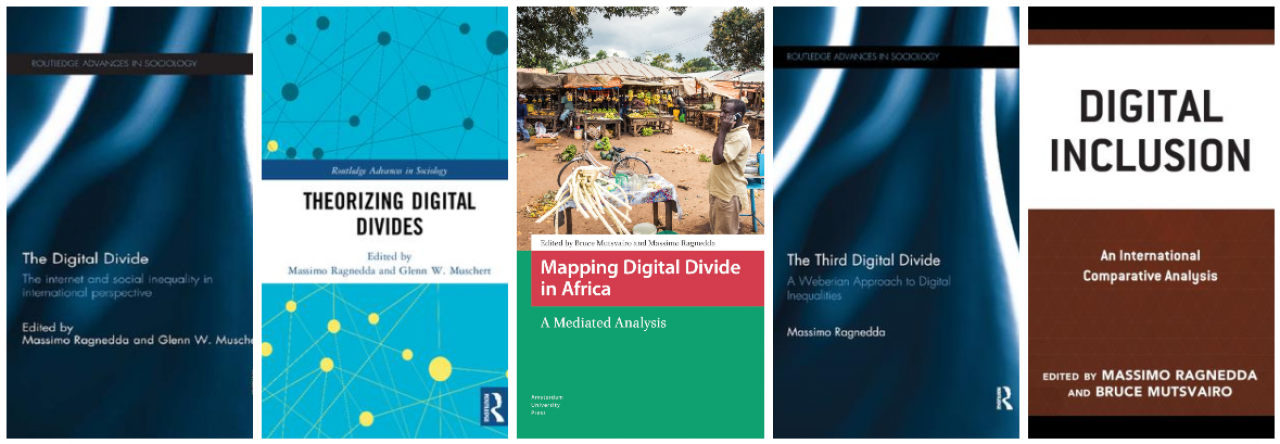Ragnedda, M., Ruiu, M. L., Addeo, F., Delli Paoli, A. (2022). Converting Digital Capital in Five
Key Life Realms. Italian Sociological Review, 12 (1), 19-40.
This article theorizes fresh connections between Bourdieusian social theory, and the digital divide in five key areas: political, economic, cultural, social, and personal digital advantage. In so doing it makes new arguments about how digital resources result in benefits that accrue from the combination of both access to and use of ICTs. In this way, the findings shed additional light on the third level of the digital divide by focusing on the role played by digital capital in influencing the uneven distribution of benefits that derive from the use of the Internet. Based on a structured sample of the UK population, the article adopts the model of digital capital developed by Ragnedda, Ruiu and Addeo (2019). Findings show that varied levels of digital capital are related to engagement in activities that have political, social, economic, cultural, and personal valence. Thus, the study offers compelling evidence of the increasing importance of digital capital in everyday life.
- Introduction
This paper makes a significant contribution by revealing how competencies and resources work synergistically to extend benefits in multiple life areas. To do this we use the theoretical framework introduced by Ragnedda (2018) and empirically tested by Ragnedda, Ruiu and Addeo (2019), known as digital capital. In Bourdieusian terms, digital capital is intended as “a set of internalized abilities and aptitude” (digital competencies) as well as “externalized resources” (digital technology) that can be “accumulated and transferred from one arena to another” (Ragnedda, 2018).
More specifically, this paper investigates the different outcomes in five key life realms (social-political-economic-personal-cultural) that might derive from uneven possessions of digital capital. The unequal distribution of tangible benefits that individuals can get from the use of ICTs, gives rise to what has been recently recognised as the third level of the digital divide (van Deursen, Helsper, 2015; Ragnedda, 2017). This new level of digital divide refers to specific types of inequalities that add to the two existing levels of the digital divide, namely inequalities in access to ICTs (the first level) and inequalities in using ICTs (the second level). While scholars have developed several approaches to study the first level of the digital divide – different qualities and types of access (Lenhart, 2000; Ono, Zavodny, 2003) – and the second level of the digital divide, e.g., different digital competence (Micheli, 2015; Blank, Groselj, 2014), the third level remains under-studied. This article fills this gap in the literature, by exploring the inequalities in tangible outcomes, contributing towards understanding the third level of the digital divide. By using digital capital as a holistic variable (Ragnedda, Ruiu, 2020) that encompasses both digital competencies (information, communication, safety, content creation, and problem solving) and digital technologies (quality and type of access), this article offers a more sophisticated examination of how access and use of the Internet impact on the offline realms. Specifically, this paper attempts to answer the following research question:
To what extent does digital capital influence the tangible outcomes that individuals achieve from accessing and using the Internet?
To answer this research question, we first provide the general theoretical background that underpins this research, by introducing the concept of digital capital, illustrating the development of digital inequalities, and then formulating five main hypotheses related to the main research question. The third section describes the methods used to collect and analyse the data, while the fourth section reports the results of our study. Finally, before drafting some conclusions and underlining some of the limits of our research, we will discuss and unpack the implications of the research.


Lascia un commento